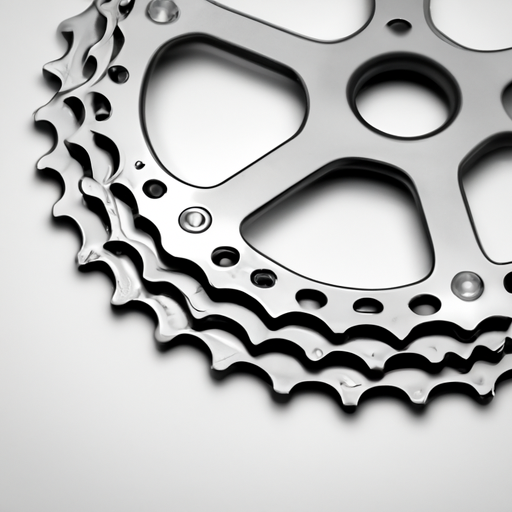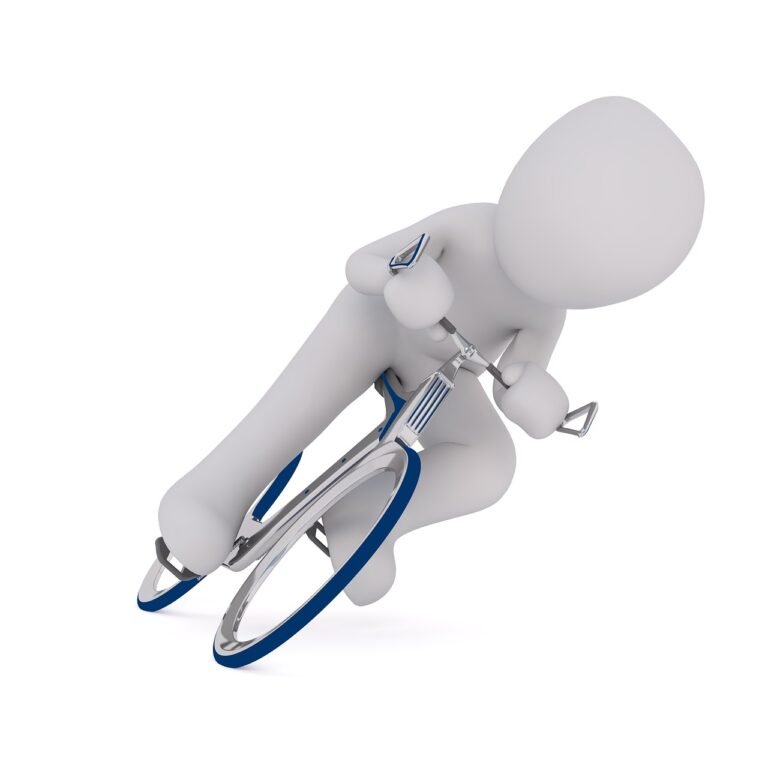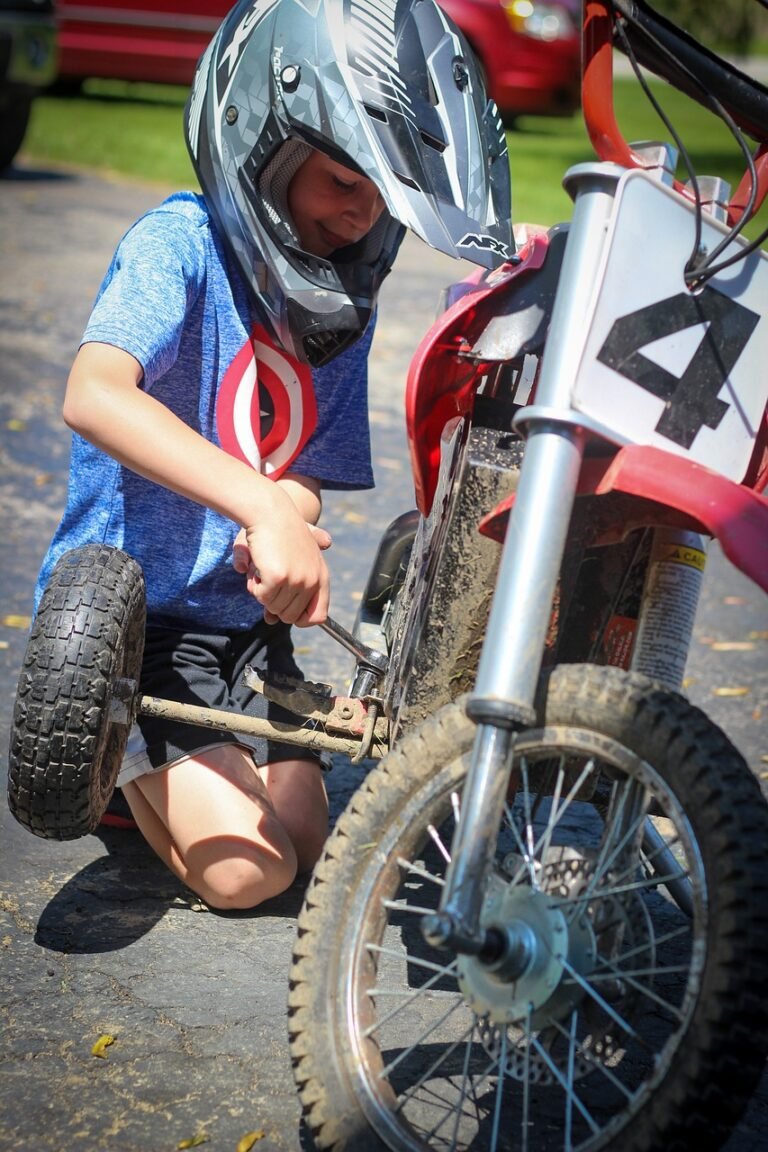Can I Convert My Bike To A Single-speed Or Fixed-gear Setup?
Thinking about converting your bike to a single-speed or fixed-gear setup? Curious about the process and whether it’s possible? Look no further! In this article, we’ll explore the feasibility and benefits of converting your bike to a single-speed or fixed-gear setup. Whether you’re a cycling enthusiast looking for a new challenge or simply seeking a more minimalistic riding experience, we’ve got you covered. So, let’s dive into the world of single-speed and fixed-gear bicycles and discover if this conversion is the right move for you.
Factors to Consider Before Converting Your Bike
Before deciding to convert your bike to a single-speed or fixed-gear setup, there are several factors you should consider. These factors will help ensure that the conversion process goes smoothly and that the final result meets your expectations.
Bike Type and Compatibility
The first factor to consider is the type of bike you currently have and its compatibility with a single-speed or fixed-gear conversion. Not all bikes are suitable for conversion, so it’s important to assess whether your bike has the necessary characteristics. Generally, bikes with horizontal or semi-horizontal dropouts are more compatible for conversion. Additionally, certain bike types such as vintage steel frame bikes, track bikes, rigid mountain bikes, and urban/commuter bikes are often preferred for conversion due to their design and versatility.
Frame and Dropouts
The frame and dropouts of your bike play a crucial role in the success of the conversion. As mentioned earlier, horizontal or semi-horizontal dropouts are ideal for single-speed or fixed-gear setups as they allow for proper chain tensioning. If your bike has vertical dropouts, you may need to use a chain tensioner or an eccentric bottom bracket to achieve the desired chain tension. It’s also important to ensure that the frame is in good condition and free from any structural issues that may affect the conversion process.
Gearing and Speed Preference
Another factor to consider is your preferred gearing and speed. Single-speed bikes have one gear, while fixed-gear bikes have a fixed gear ratio. If you prefer simplicity and don’t mind pedaling continuously, a single-speed setup may be suitable for you. On the other hand, if you enjoy the challenge of riding with a fixed gear and the ability to control your speed through pedaling, a fixed-gear setup may be more appealing. It’s important to choose the appropriate gear ratio based on your riding style and the terrain you’ll be encountering.
Skill Level and Tools
Lastly, consider your skill level and the tools you have access to. Converting a bike to a single-speed or fixed-gear setup requires some mechanical knowledge and the right tools. If you’re not confident in your abilities, it may be best to consult with a professional bike mechanic who can assist you with the conversion process. However, if you’re comfortable working on bikes and have the necessary tools such as a chain whip, lockring tool, hex keys, and a chain breaker, you may be able to tackle the conversion yourself.
Converting a Bike to a Single-speed Setup
Converting a bike to a single-speed setup is a relatively straightforward process that involves removing the shifters and derailleur, adjusting the chain length, installing a new single-speed cog, adjusting the chain tension, and checking brake compatibility.
Remove Shifters and Derailleur
The first step in converting your bike to a single-speed setup is to remove the shifters and derailleur. Start by shifting the chain to the smallest chainring and smallest rear cog. Then, loosen the cable tension and remove the derailleur from the rear derailleur hanger. Remove the shifters from the handlebars and carefully detach the cables from the frame.
Adjust the Chain Length
After removing the derailleur, you’ll need to adjust the chain length to fit your single-speed setup. The chain should be long enough to allow for proper tensioning but not too loose or too tight. Use a chain tool to break the chain at the desired length, ensuring that you leave enough slack for adjustment.
Install New Single-speed Cog
Once the chain length is adjusted, it’s time to install the new single-speed cog. Remove the old cassette or freewheel from the rear wheel using a cassette removal tool or a freewheel removal tool, depending on the type of setup your bike has. Install the single-speed cog onto the freehub body and tighten it securely using a lockring tool.
Adjust Chain Tension
With the single-speed cog installed, it’s important to ensure proper chain tension. If your bike has horizontal or semi-horizontal dropouts, you can adjust the chain tension by sliding the rear wheel forward or backward until the chain has the desired tension. If your bike has vertical dropouts, you may need to use a chain tensioner or an eccentric bottom bracket to achieve the proper tension.
Check Brake Compatibility
Lastly, don’t forget to check the compatibility of your brakes with the new single-speed setup. Ensure that the brake calipers align with the rims properly and that there is sufficient stopping power. If needed, adjust the brake pads and cable tension to ensure optimal braking performance.
Converting a Bike to a Fixed-gear Setup
Converting a bike to a fixed-gear setup is similar to the process of converting it to a single-speed setup, with a few additional steps specific to fixed-gear riding.
Remove Freewheel or Cassette
The first step in converting your bike to a fixed-gear setup is to remove the freewheel or cassette from the rear wheel. Use a freewheel removal tool or a cassette removal tool, depending on the type of setup your bike has, to unscrew and remove the old freewheel or cassette from the freehub body.
Choose a Suitable Fixed-gear Hub
Next, you’ll need to choose a suitable fixed-gear hub. Fixed-gear hubs have a threaded section that allows for the installation of a fixed-gear cog. Make sure the fixed-gear hub you choose is compatible with your bike’s frame and dropout spacing.
Install Fixed-gear Cog
Install the fixed-gear cog onto the fixed-gear hub, ensuring that it is tightly secured. This is an important step as the fixed-gear cog is directly connected to the rear wheel and dictates the gear ratio of your fixed-gear setup.
Adjust Chain Tension
Similar to the single-speed conversion process, adjust the chain tension to ensure proper tensioning. If your bike has horizontal or semi-horizontal dropouts, you can adjust the chain tension by sliding the rear wheel forward or backward. If your bike has vertical dropouts, consider using a chain tensioner or an eccentric bottom bracket for proper tensioning.
Check Brake Compatibility
Lastly, check the compatibility of your brakes with the fixed-gear setup. Ensure that the brake calipers align with the rims properly and that there is sufficient stopping power. Adjust the brake pads and cable tension as necessary to ensure optimal braking performance.
Recommended Tools for Bike Conversion
Converting a bike to a single-speed or fixed-gear setup requires specific tools to ensure a smooth and successful conversion process. Here are some recommended tools that will make your bike conversion easier:
Chain Whip
A chain whip is a tool used to hold the cassette or freewheel in place when removing or installing it. This tool is essential for removing the cassette or freewheel from the rear wheel during the conversion process.
Lockring Tool
A lockring tool is used to tighten or loosen the lockring that secures the single-speed or fixed-gear cog onto the hub. This tool is necessary for proper installation and removal of the cog.
Cassette Removal Tool
A cassette removal tool is used to remove the cassette from the rear wheel. This tool is essential if your bike has a cassette instead of a freewheel.
Bottom Bracket Tool
A bottom bracket tool is used to remove and install the bottom bracket, which houses the bearings of the crankset. This tool may be necessary if you need to replace or service the bottom bracket during the conversion process.
Hex Keys
Hex keys, also known as Allen wrenches, are used to tighten or loosen various components on your bike, such as bolts and screws. Different sizes of hex keys may be needed for different components, so having a set of them is recommended.
Adjustable Wrench
An adjustable wrench is a versatile tool that can be used to tighten or loosen nuts and bolts. It comes in handy when working on various parts of your bike during the conversion process.
Chain Breaker
A chain breaker is used to break the chain at the desired length during the conversion process. This tool allows you to remove excess links from the chain and achieve the proper chain length.
Crank Puller
A crank puller is used to remove the crankset from the bottom bracket spindle. If you need to replace or service the crankset during the conversion process, a crank puller will be essential.
Safety Precautions and Considerations
When converting your bike to a single-speed or fixed-gear setup, it’s important to prioritize safety. Here are some safety precautions and considerations to keep in mind throughout the conversion process:
Consult with a Professional
If you’re not confident in your mechanical skills, it’s always a good idea to consult with a professional bike mechanic. They can provide valuable guidance and ensure that the conversion is done properly and safely.
Ensure Proper Chain Tension
Proper chain tension is crucial for a smooth and safe ride. Make sure you achieve the correct chain tension for your chosen setup, whether it’s a single-speed or fixed-gear. Too loose of a chain can lead to slippage, while too tight of a chain can cause excessive wear on the drivetrain components.
Test Ride and Adjust
After completing the conversion, take your bike for a test ride in a controlled environment. Pay attention to the chain tension, braking performance, and overall feel of the bike. If any issues arise, make the necessary adjustments before venturing out on longer rides.
Wear Safety Gear
When riding a single-speed or fixed-gear bike, it’s important to wear the appropriate safety gear. This includes a properly-fitted helmet, gloves, and any additional protective gear you deem necessary. Safety should always be a priority when cycling.
Check Local Traffic Laws
Before taking your newly converted bike on public roads, familiarize yourself with the local traffic laws and regulations. Ensure that you understand the rules regarding braking requirements, lighting, and any other applicable laws specific to your area.
Advantages of Single-speed and Fixed-gear Bikes
There are several advantages to riding a single-speed or fixed-gear bike that may make the conversion worthwhile. Here are some of the key benefits:
Simplicity and Low Maintenance
One of the main advantages of single-speed and fixed-gear bikes is their simplicity and low maintenance requirements. With fewer components and no need for derailleurs or multiple gears, these bikes are easier to maintain and less prone to mechanical issues. This simplicity also means less time spent on maintenance and more time enjoying the ride.
Improved Pedaling Efficiency
Because single-speed and fixed-gear bikes have a direct drivetrain connection, pedaling is more efficient, allowing you to transfer more power to the wheels. This can result in a smoother and faster ride, especially on flat terrain or during sprints.
Better Strength and Endurance
Riding a single-speed or fixed-gear bike requires more effort and engagement from the rider, which can lead to improved strength and endurance over time. The constant engagement of the legs and the need to generate power throughout the entire pedal stroke can help build leg muscles and improve overall fitness.
Enhanced Connection with the Bike
With a single-speed or fixed-gear setup, you have a more intimate connection with your bike. The direct feedback from the drivetrain allows you to feel and respond to every pedal stroke and subtle change in terrain. This enhanced connection can result in a more immersive and enjoyable riding experience.
Disadvantages of Single-speed and Fixed-gear Bikes
While there are many advantages to riding a single-speed or fixed-gear bike, it’s important to consider the potential disadvantages as well. Here are some factors to keep in mind:
Limited Gear Range
One of the main disadvantages of single-speed and fixed-gear bikes is their limited gear range. With only one gear or a fixed gear ratio, these bikes may not be suitable for riders who frequently encounter steep hills or varying terrain. Riding uphill or against strong headwinds can be challenging, and it may require more effort than with a geared bike.
Less Suitable for Hilly Terrain
Similarly, the limited gear range of single-speed and fixed-gear bikes can make them less suitable for riding in hilly terrain. The lack of multiple gears makes it difficult to find the optimal gear for different slopes, which can result in either spinning out or struggling to maintain momentum.
No Freewheeling Ability
A defining characteristic of fixed-gear bikes is their lack of freewheeling ability. This means that the pedals are always in motion when the bike is moving, and you cannot coast without pedaling. This constant engagement can be tiring, especially when riding long distances or in traffic.
Increased Risk of Knee Injuries
The lack of multiple gears and the constant engagement of the legs in a single-speed or fixed-gear setup can put more strain on the knees, especially during climbs or when resisting the forward motion of the pedals. Riders with knee issues or those prone to knee injuries should exercise caution when considering a single-speed or fixed-gear conversion.
Popular Bike Models for Conversion
Certain bike models are more commonly chosen for conversion due to their design and versatility. Here are a few popular bike models that are often selected for single-speed or fixed-gear conversions:
Vintage Steel Frame Bikes
Vintage steel frame bikes are a popular choice for conversion due to their timeless aesthetic and quality construction. These bikes often have horizontal or semi-horizontal dropouts, making them compatible for both single-speed and fixed-gear setups. Additionally, the resilient nature of steel frames can provide a comfortable and lively ride.
Track Bikes
Track bikes are purpose-built for racing on velodromes but can also be converted for street use. With their fixed-gear drivetrain and aggressive geometry, track bikes offer a responsive and nimble ride. However, keep in mind that track bikes are designed for a specific purpose and may not be as versatile for everyday riding.
Rigid Mountain Bikes
Rigid mountain bikes, without suspension forks or rear suspension, can be excellent candidates for conversion. Their durable frames and compatibility with wider tires make them suitable for both urban commuting and off-road adventures. Converting a rigid mountain bike to a single-speed or fixed-gear setup can provide a reliable and versatile ride.
Urban and Commuter Bikes
Urban and commuter bikes, designed with practicality and versatility in mind, are also popular choices for conversion. These bikes often have the necessary features such as horizontal dropouts, fender and rack mounts, and clearance for wider tires. Converting an urban or commuter bike to a single-speed or fixed-gear setup can enhance its simplicity and functionality for city commuting.
Finding Help and Resources for Converting Your Bike
If you’re new to bike conversion or simply need guidance throughout the process, there are several sources of help and resources available:
Local Bike Shops
Local bike shops often have experienced mechanics who can provide advice and assistance with bike conversions. They may also have the necessary tools and parts in stock to complete the conversion process efficiently.
Online Forums and Communities
Online forums and communities dedicated to cycling and bike mechanics can be valuable sources of information and support. By joining these communities, you can connect with experienced individuals who can answer your questions, offer advice, and share their own conversion experiences.
YouTube Tutorials
YouTube is a treasure trove of video tutorials on various bike-related topics, including bike conversion. Many knowledgeable individuals and bike mechanics post detailed videos demonstrating the conversion process step-by-step. These tutorials can provide visual guidance and make the conversion process easier to understand.
Bike Co-ops or DIY Workshops
If you prefer a hands-on approach and access to a wide range of tools, consider visiting a bike co-op or a DIY workshop in your area. These community-oriented spaces often provide tools, workspace, and knowledgeable volunteers who can assist you with your bike conversion. It’s also a great opportunity to connect with other cycling enthusiasts and learn from their experiences.
Conclusion
Converting your bike to a single-speed or fixed-gear setup can be a rewarding process that enhances your riding experience and allows for a more intimate connection with your bike. However, it’s important to consider the factors discussed in this article before embarking on the conversion. Assess your bike’s compatibility, your own skill level, and the tools you have access to. Consult with professionals, ensure proper chain tension, and test ride your converted bike before hitting the roads. By considering these factors and following the necessary steps, you can enjoy the benefits of single-speed or fixed-gear riding while ensuring your safety and enjoyment on two wheels.



